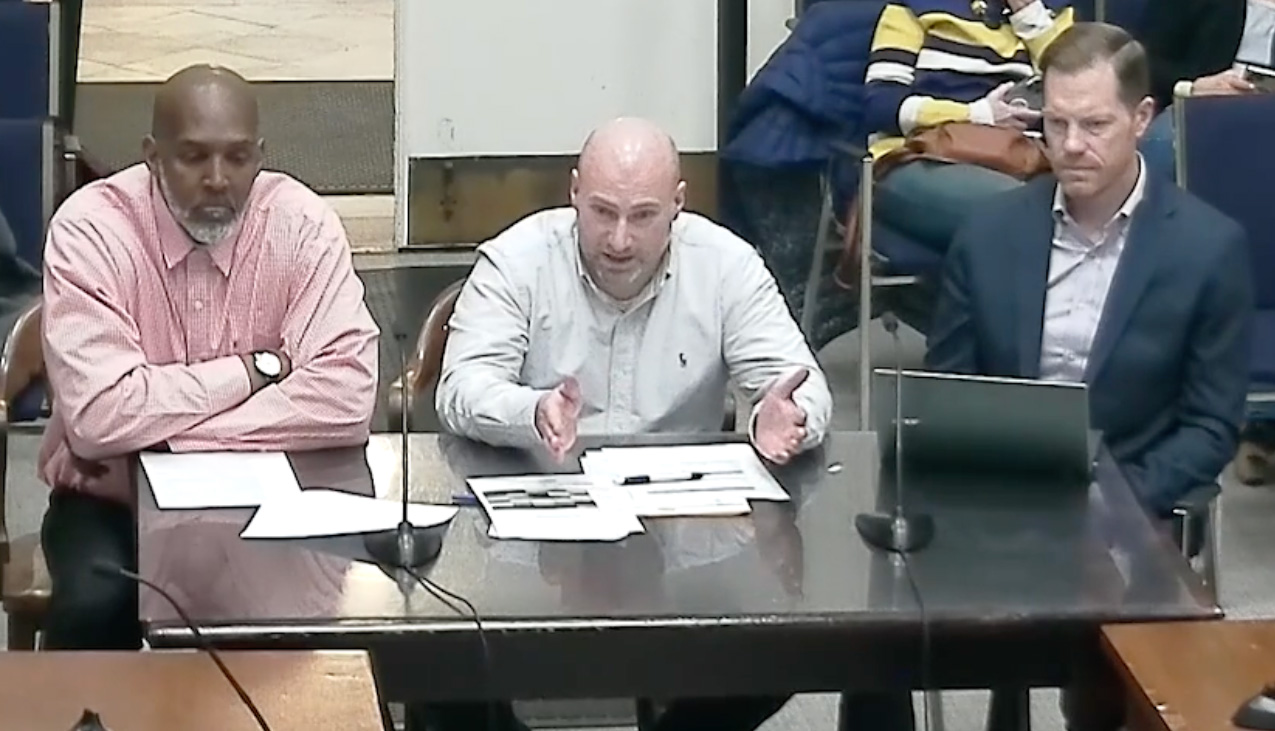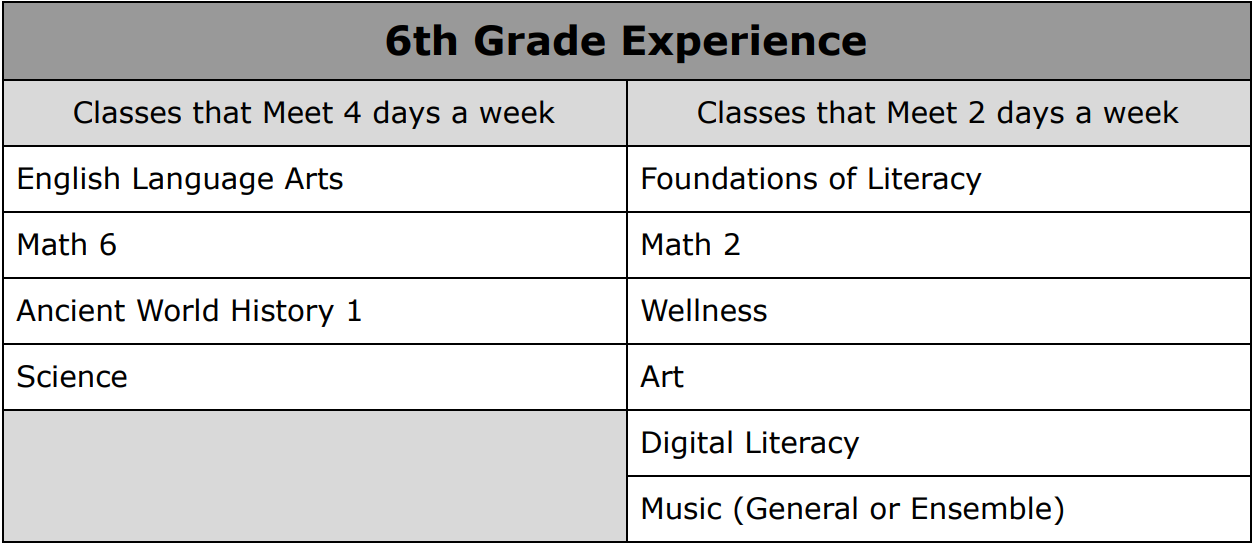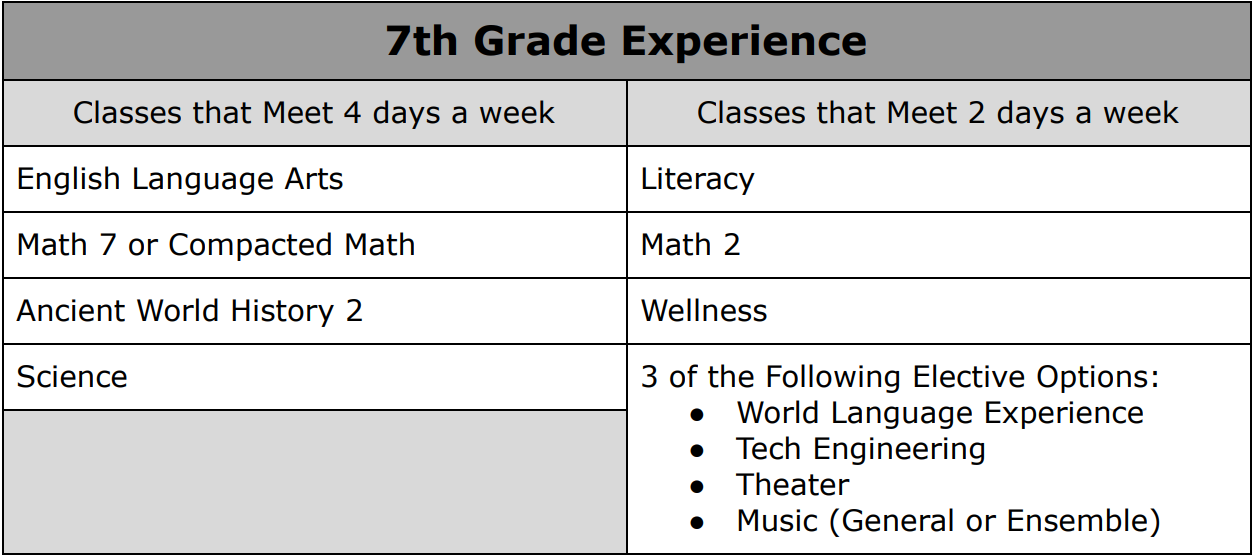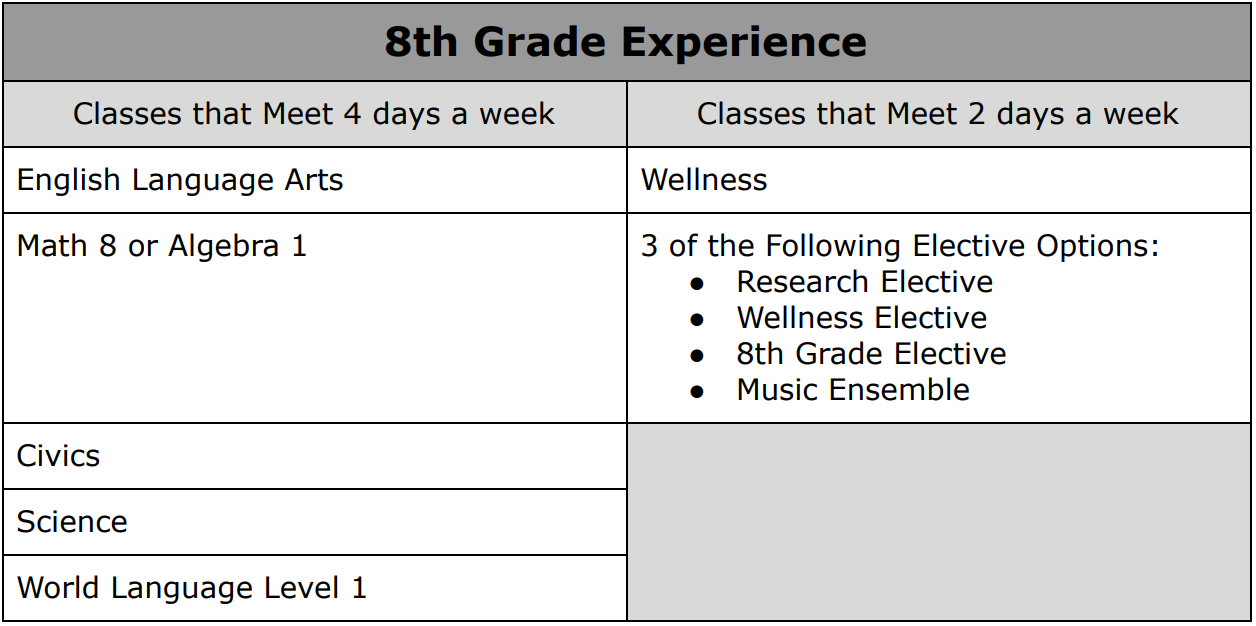School Committee Discusses Impact of Budget Cuts on Middle and High School
By Ellen Putnam

Melrose Veterans Memorial Middle School
On Tuesday evening, the School Committee heard from Melrose High School (MHS) Principal Jason Merrill and Assistant Principals Christopher Beaver and Bryan Corrigan about the Secondary Program of Studies and how budget cuts for Fiscal Year 2026 (FY26), which starts in July, are likely to impact students at MHS and at Melrose Veterans Memorial Middle School (MVMMS).
In February, city leaders announced that the City of Melrose and the Melrose Public Schools (MPS) are facing a combined $6.1 million deficit for FY26. This is due to rising costs in a number of areas, including health insurance, special education, utilities, and transportation.
MPS is making $4 million in cuts to close its portion of the budget gap. These cuts will include eliminating fifteen teacher positions at MVMMS and eight at MHS. In addition, the middle school principal position will be eliminated and Merrill will become the principal of both schools, with four assistant principals to support him across the two schools. At the last School Committee meeting, Superintendent Adam Deleidi explained his reasoning behind putting both the middle and high schools under Merrill’s leadership, which included the strong culture that Merrill has built at MHS and the fact that several other districts in the region, including some that are high-performing, operate under the model of a single principal overseeing a secondary campus.
“We’ve gotten a lot of emails about this,” said School Committee member Jennifer Razi-Thomas. “All of us in the community and all the educators are wondering: how can you pull the rabbit out of the hat, Mr. Merrill, and make lemonade out of lemons? What’s your best shot for a good year for everybody?”

Left to right: Melrose High School Assistant Principal Christopher Beaver; Principal Jason Merrill; and Assistant Principal Bryan Corrigan
Screenshot from MMTV
“It’s obviously going to be a challenge,” Merrill responded. “But I can’t say I’ve never thought about having some opportunity to lead in some capacity at the middle school as well. And there’s so much great stuff going on over at the middle school. So as long as I have something to do with it, whether it’s for a year, or less, or more, whatever the case is, I’m going to give it everything I have to try to make it the best middle school in the state.”
“Being visible as a leader is going to be really important next year,” he went on. “And I don’t think there’s any high school teachers or students who would say we’re anything less than visible. I don’t spend time in my office, and I think it goes a long way. And the second thing is trying to be as responsive as possible to the families, the students, and the staff. Those two things go hand-in-hand.”
Last year, the School Committee voted to add ten new positions at the middle school even as positions were cut at other schools in the district, in an effort to boost achievement at the middle school, which is the district’s lowest-performing school. Recent data indicated that behavioral issues at MVMMS have improved this year, which School Committee members attributed at least in part to the presence of more adults in the building. “How can we make sure that students are being well cared for, with staffing decreasing so much during the vulnerable middle school years?” Razi-Thomas asked.
“We’re certainly not saying it’s going to be easier with fewer adults, that’s for sure,” Merrill replied. “It’s going to be probably the most challenging year of a veteran educator’s career. I’m sure it’ll be the most challenging year of mine. But sometimes, the harder something is, the greater the reward.”

Melrose High School
With a total of 31 positions slated for elimination, class sizes are expected to rise significantly across the district. The contract with Melrose Educators Union (MEU) teachers specifies that “the School Committee will make every reasonable effort, short of hiring additional staff, to reduce class size to twenty-five or fewer at all grade levels.”
Early in the budget process, Superintendent Deleidi shared that it would be impossible to reach average class sizes of twenty-five at MVMMS and MHS while closing the $4 million budget gap. Planned staffing levels at both schools are currently set to result in an average class size of twenty-eight students per class, although this may vary depending on a number of factors.
“We don’t know exactly where kids will fall within each schedule,” said Merrill, “but certainly we’ll see classes that had been more typically around eighteen to twenty-two, rise up to twenty-eight pretty quickly.”
At MHS in particular, where students have a fair degree of choice over the classes they take, especially in the upper grades, staffing and scheduling are likely to remain in flux at least until summer.

Classes required for graduation from MHS
“We proceeded as normal when we started constructing the program of studies for next year,” Corrigan explained, “and then there’s the budget cuts. There’s a few ways to do it. One is you increase class sizes. You know, you can increase the number of kids in a freshman English class. We’ve been very fortunate to have small, unleveled classes for freshmen. The model’s tremendous. It’s the envy of other communities. And we’re going to lose some of that next year. Those class sizes are going to increase, because when you cut one English teacher, you have to cut five sections.”
“At some point, though,” he continued, “those cuts get so deep that you have to cut programming. Because you’re running out of just English, social studies, math, and science teachers to cut. You can’t cut special education teachers because we have services that we’re legally obligated to deliver. We’re trying to preserve our language department while still cutting language teachers.”
“We have some awesome programs at the high school,” Corrigan went on. “If your kid is into art, video production, computer science, business...we currently have a program where they can take those classes for four years, and they can get up to a really advanced level in that area, where they’re doing stuff that’s really impacting the community. Unfortunately, we’ve run out of things to cut, so now we have to start cutting the people who work in those programs, and we have to do it based on enrollment because we, literally, math-wise, cannot run classes that are small next year. We just don’t have the staff to do it. And frankly, I don’t even know how we’re going to staff all the classes we have anyway.”
“In the past,” Merrill added, “we’ve used numbers like 15 as the minimum threshold for running a course, but we’re going to have to be super mindful of that this year, because if you do run that course of 15 or 16, that’s going to affect what another class looks like, because there’s only so many teachers to fit into the puzzle.”



Course of studies for students in the sixth, seventh, and eighth grades
“And that’s what you see at the middle school as well,” Corrigan went on. “You see a simplified schedule based on what we can afford to offer, given the fact that we have to employ our staff in as efficient a way as possible.”
One example is in world language offerings. This year, sixth graders took an exploratory class and chose one of five languages (Spanish, French, German, Italian, or Latin) to begin studying in seventh grade. Now, those classes will be pushed back so students have no language in sixth grade, take the exploratory language class in seventh, and begin formal study in eighth grade. The grade at which a student begins language study can affect whether they are able to take an Advanced Placement language course in 12th grade, which can in turn affect their college applications. “So that was a priority at the middle school, to make sure that we’re able to offer all five languages to eighth grade students,” said Corrigan, “and we think we’re able to do that.”
One topic that has been discussed often throughout the budget process so far is the loss of the team model at MVMMS, in which four core teachers (English, math, social studies, and science) have the same cohorts of students in each grade level. This model allows teachers to collaborate on supporting students who are struggling. However, it is more expensive to maintain because students’ schedules can’t be as easily optimized for class size.
Merrill shared that they may be able to preserve some semblance of a team model in the sixth grade, although “it is not our number one priority right now.” “Our number one priority,” he explained, “is putting teachers and students in the best position to find success and keeping our class size down. That being said, there’s a very good chance, certainly in sixth and maybe even in seventh grade, that at the end of the day, we may just be able to put half the kids with half the teachers and the other half of the kids with the other half of the teachers, which is effectively like two teams. We’ll certainly do that to the best of our ability. And then build in the time and the opportunity for those teachers to collaborate in different ways.”
Last month, by moving Chromebook replacement costs off the school budget to be funded through free cash (pending City Council approval), Deleidi was able to restore a few teacher positions that had been cut. He also plans to bring back a single Director of Curriculum K-12 position.
This curriculum director position was brought up during public comment this week. Leslie Means, the president of the Melrose Educators Union, said, “You’ve been dealt an awful hand, and I think you’ve been doing the best job with the hand you’ve been dealt. So when the mayor is able to find some money in the budget to funnel over to the schools, we need to all be on the same page about where that money should go. We need to prioritize bringing down class sizes, offering more elective options for students that can have tremendous impacts on their future. We hope to be able to preserve the team model, even if only in the sixth grade, to assist with that very, very rough transition from elementary to middle school. Or we could use it to put more supports in place for our special education students, given the uncertainty of federal funding.”
“This plan to create a brand new, non-student-facing position in the central administrative office is not the right decision,” Means went on. In other districts, she noted, a K-12 Curriculum Director “would be in charge of implementing new curriculum, which we can’t afford; sourcing and organizing outside professional development - the budget for that has been slashed; evaluating and coaching our non-professional status teachers - we’ve pretty much cut all of them; overseeing subject-specific directors - we have none of those left.”
“Not only is this job unnecessary with what our schools will look like next year,” she added, “but we have lead teachers in every building. These are your experts that can help you on the ground and provide extra support with curriculum. You could use a fraction of the money you’re spending on this position to increase stipends and empower your lead teachers and actually utilize them as the educational leaders that they are.”

Deleidi noted that the curriculum director position is not a new position, but rather a position that combines what was four jobs in 2023-24, and two jobs this year, into a single position for next year.
“It’s simply not possible to run a district without curriculum directors,” said Deleidi. “There are things that are done behind the scenes that people don’t see, but you have to understand that you don’t see everything that’s done.” The single curriculum director position “would be an extremely big job, but the person who would be doing that job is highly capable, highly qualified, and I’m very confident that it’s going to be an extremely valuable position.”
In terms of teacher evaluations, non-professional status teachers (those who are in their first three years in the district) require the most administrative work, since they are on an annual evaluation cycle, while professional status teachers are generally on a two-year cycle. Seniority is a major determinant of which teachers will be laid off, so non-professional status teachers are the most likely to be let go. However, all teachers must be evaluated under Department of Elementary and Secondary Education and contractual requirements.
Deleidi pointed out that the two curriculum directors currently evaluate 90 secondary teachers between them, a caseload that would need to be divided among the principal and four assistant principals at the middle and high schools. “And then that would also strain the expectations around assistant principals helping students with their behavior,” said Deleidi, “because you’re going to have to spend the majority of your days in classrooms evaluating teachers. And you can’t just go in there for five minutes. You have to go in there for a substantial amount of time. And then there's the time that it takes to write those evaluations.”
“When school systems work well,” reflected Razi-Thomas, “everyone’s in their role, doing what they’re supposed to do. Teachers are teaching, assistant principals are helping with behavior, directors are evaluating, and lead teachers are also really creating curriculum, trying new curriculum, and leading.”
The School Committee plans to vote on the school budget at their meeting next Tuesday, April 15th. Any community members who wish to share their opinions prior to the vote can attend the School Committee’s Zoom office hours on Saturday, April 12th at 8:30am, speak during public comment at next week’s meeting, or get in touch with School Committee members by email. The mayor is expected to present her proposed budget, including the school budget and all other city departments, to the City Council in early May.

Follow Us: